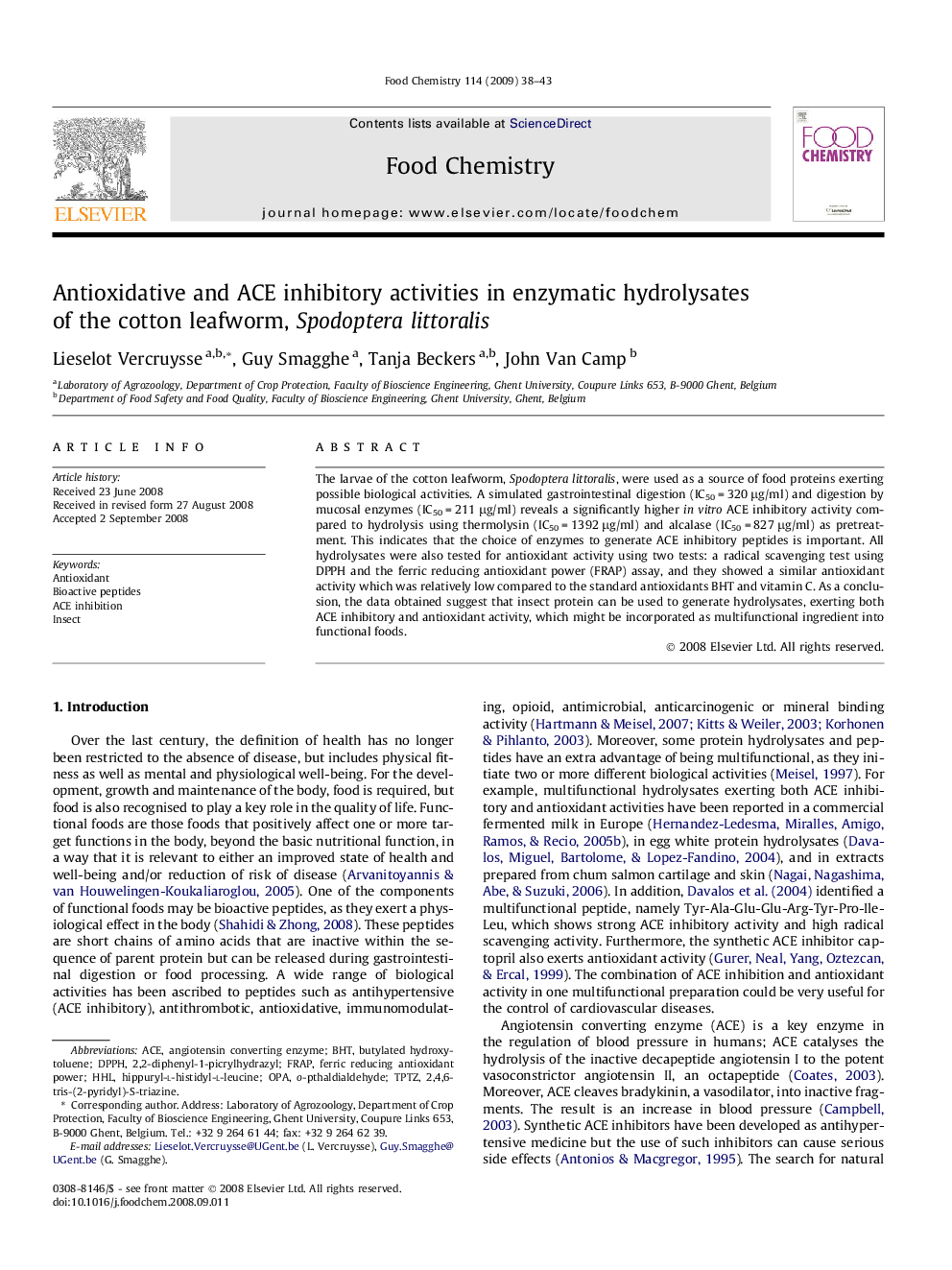| Article ID | Journal | Published Year | Pages | File Type |
|---|---|---|---|---|
| 1188728 | Food Chemistry | 2009 | 6 Pages |
The larvae of the cotton leafworm, Spodoptera littoralis, were used as a source of food proteins exerting possible biological activities. A simulated gastrointestinal digestion (IC50 = 320 μg/ml) and digestion by mucosal enzymes (IC50 = 211 μg/ml) reveals a significantly higher in vitro ACE inhibitory activity compared to hydrolysis using thermolysin (IC50 = 1392 μg/ml) and alcalase (IC50 = 827 μg/ml) as pretreatment. This indicates that the choice of enzymes to generate ACE inhibitory peptides is important. All hydrolysates were also tested for antioxidant activity using two tests: a radical scavenging test using DPPH and the ferric reducing antioxidant power (FRAP) assay, and they showed a similar antioxidant activity which was relatively low compared to the standard antioxidants BHT and vitamin C. As a conclusion, the data obtained suggest that insect protein can be used to generate hydrolysates, exerting both ACE inhibitory and antioxidant activity, which might be incorporated as multifunctional ingredient into functional foods.
